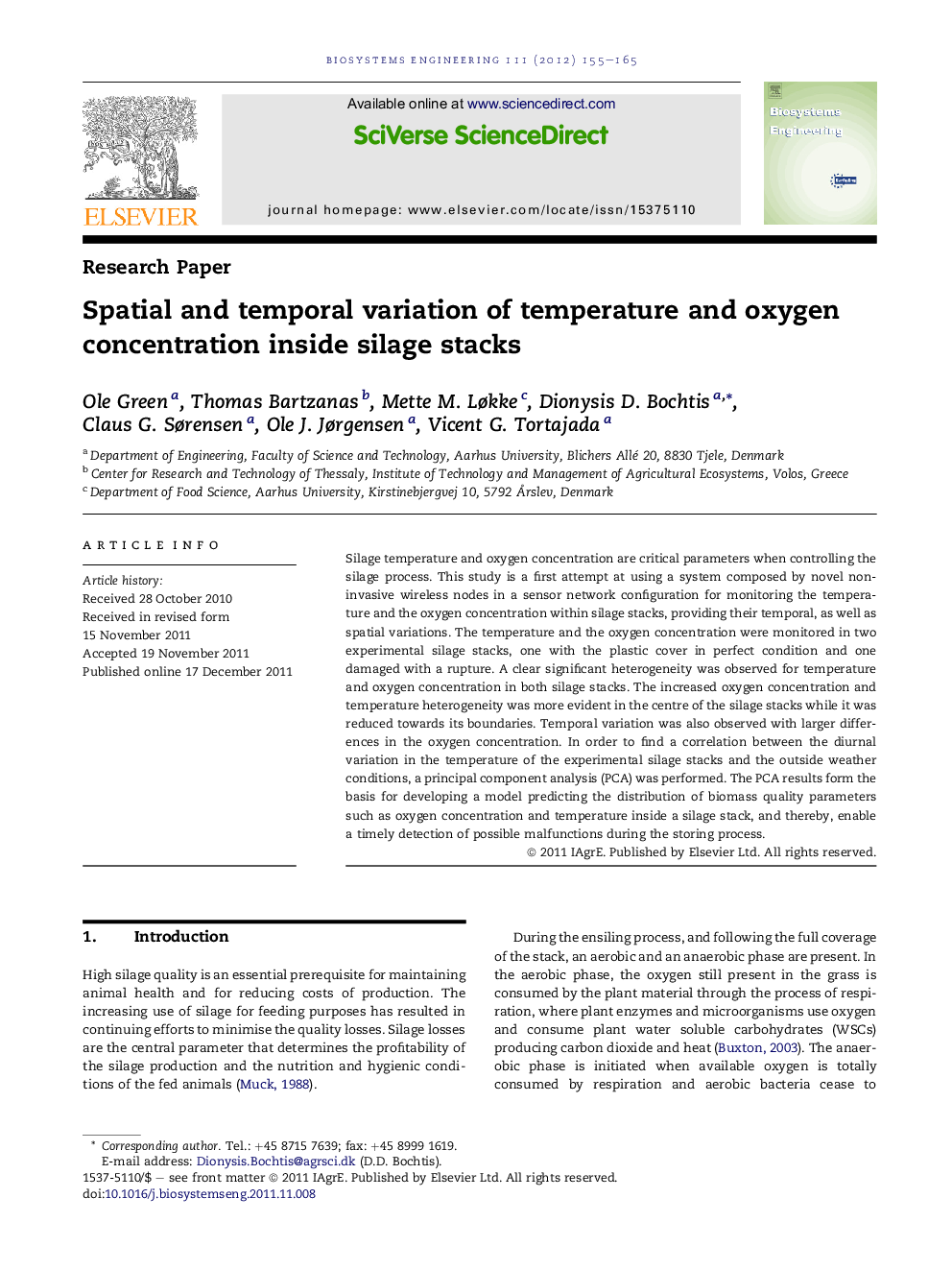| Article ID | Journal | Published Year | Pages | File Type |
|---|---|---|---|---|
| 1711564 | Biosystems Engineering | 2012 | 11 Pages |
Silage temperature and oxygen concentration are critical parameters when controlling the silage process. This study is a first attempt at using a system composed by novel non-invasive wireless nodes in a sensor network configuration for monitoring the temperature and the oxygen concentration within silage stacks, providing their temporal, as well as spatial variations. The temperature and the oxygen concentration were monitored in two experimental silage stacks, one with the plastic cover in perfect condition and one damaged with a rupture. A clear significant heterogeneity was observed for temperature and oxygen concentration in both silage stacks. The increased oxygen concentration and temperature heterogeneity was more evident in the centre of the silage stacks while it was reduced towards its boundaries. Temporal variation was also observed with larger differences in the oxygen concentration. In order to find a correlation between the diurnal variation in the temperature of the experimental silage stacks and the outside weather conditions, a principal component analysis (PCA) was performed. The PCA results form the basis for developing a model predicting the distribution of biomass quality parameters such as oxygen concentration and temperature inside a silage stack, and thereby, enable a timely detection of possible malfunctions during the storing process.
► Mapping spatial and temporal variation of temperature and oxygen in silage stacks. ► Temperature and oxygen distribution in damaged silage stacks. ► Monitor and predict silage quality. ► DSS basis for optimal silage handling based on a multi-statistic approach.
